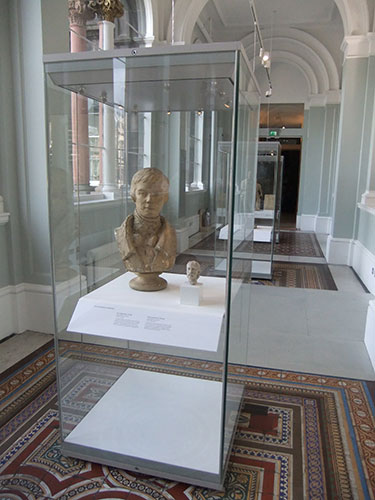One of the challenges museum conservators have to face when cleaning historic objects is learning the difference between new dirt, historic dirt, degraded coatings and original surface finishes. All have an effect on the overall appearance of objects and, working with curators, conservators have to decide what needs to be cleaned, removed or kept to preserve the integrity of the object.
A collection of painted plaster models recently received by National Museums Scotland has presented just such a challenge to the Artefact Conservation department.
The National Museums have recently acquired a group of plaster models by Ratho born sculptor David Watson Stevenson (1842-1904). Stevenson is probably best known for his sculpture of William Wallace at the National Wallace Monument in Stirling.
The models have been brought into the conservation labs for condition assessment and treatment before they go on display in a temporary exhibition of new decorative art acquisitions entitled “New For You” in the National Museum of Scotland. They include two models of Robert Burns and a series of models of allegorical females, commissioned for a memorial in Oldham dedicated to John Platt, a Victorian industrialist.
Usually the public get to see objects when we have finished the conservation, however, in this exhibition we will be displaying the pieces partially cleaned and repaired, to give visitors an insight into what is involved and how the objects will visually change once treatment is completed.
It is always exciting to get new acquisitions, and as a Conservator you get to see these objects at close hand. Sometimes all isn’t as it seems, and once you start working on a piece you start to uncover its secrets. In this case our investigations have led to the conclusion that some of the sculptures would have originally looked very different from how they do today. Using conservation cleaning techniques, we have been able to start restoring the original appearance of some of the sculptures.
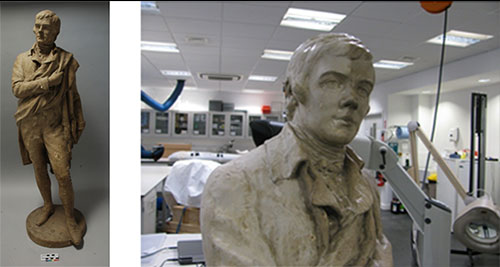
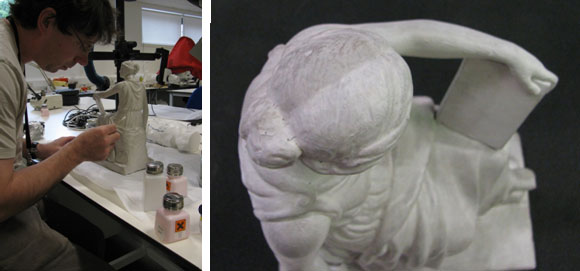
We are also starting to understand why some of the sculptures look the way they do now. The allegorical figure on the left has been overpainted. Further investigation shows that the figure was originally painted using copper based metal powders to imitate a bronze finish, giving it an appearance similar to the figure on the right. We now believe the metal powders on the figure on the left have corroded and stained the overpaint, causing the darkening to the face and arm.
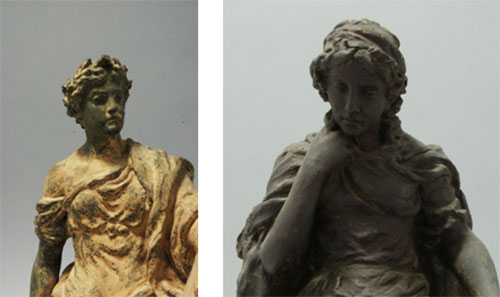
The plaster models have also had to get some first aid treatment. In the past, prominent areas such as toes, fingers and limbs have been damaged by accidental knocks and bumps. Some of the applied paint on the sculptures is now loose and falling off and this has to be stabilised before any cleaning can take place.

The models also contain iron and copper wire supports called armatures. Due to damp conditions these armatures corrode, the corrosion expands forcing the plaster to spall off the surface and the armatures become weaker. In the worst case this caused the head to detach from the body of the figure shown below.
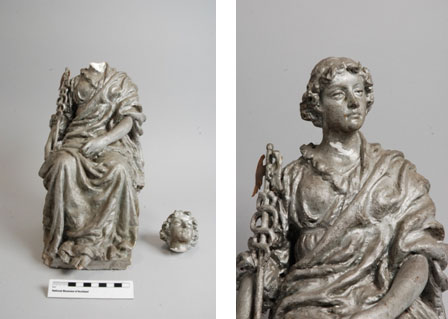
You can see the conserved models on display in the Grand Gallery at National Museum of Scotland.
